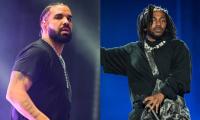In India, 1957 was an eventful year as the country held its second democratic elections with Nehru coming back to power with a thumping majority and the Communist Party of India formed its first state government in Kerala. Namboodiripad became the first communist chief minister in an Indian state.
Congress also had to form a coalition government in Orissa. The communist government in Kerala introduced the Land Reform Ordinance and the Education Bill but there were widespread anti-communist protests that the opposition organized. Congress and the Malabar Catholic Church joined hands against the democratically elected communist government and Nehru used this unrest as an excuse to dismiss the state government after just 27 months in office. This left a major blot on Nehru’s democratic credentials and the communists once again became skeptical of Congress and Nehru. A regional party in Orissa Ganatantra Parishad formed a coalition government with Congress in 1959.
By the late 1950s, though the Congress party had been in power for over a decade, still there were disgruntled elements in the party which acted and thought differently from Nehru. One of them was Rajagopalachari – the first Indian head of state from 1948 to 1950 and a former Union home minister and chief minister of Madras – who remained estranged for long but formally left Congress in 1957. First he formed a Congress reform committee that later on became a new political party, the Indian National Democratic Congress which merged with the Swatantra Party in 1959.
Swatantarta was a centre-right conservative party which challenged Nehru’s socialist politics and statist economy. It claimed to believe in classical liberalism and being secular had members of different nationalities and religions. Most of its leaders were fairly old: Rajagopalachari was 82, Congressman Pheruman and Gujarati Kanaiyalal Maneklal (KM) Munshi were in their 70s. There were also some relatively young ‘liberals’ such as the founding president N G Ranga who was nearly 60. Perhaps the youngest of the Swatantra Party leaders were two Gujarati Parsis: Minocher (Minoo) Masani in his 50s and Piloo Mody in his 30s.
The Swatantra Party stood for a market-based economy opposing the so-called ‘License Raj’ that Congress had imposed. It was a system of licences and strict government regulations for business and industries, resulting in bureaucratic red tape that most people disliked. By 1960, the Hindu nationalists were also gaining momentum as Jana Sangh had come into being in 1951, serving as the political arm of the RSS. After the elections of 1962, the two largest political parties in India were Congress with 361 seats, and CPI winning 29 seats, nine from West Bengal and seven from Andhra Pradesh.
The Swatantra Party (18) and Jana Sangh (14) were third and fourth respectively. Surprisingly, Jana Sangh won more than Jayaprakash Narayan’s Praja Socialist Party winning just 12 seats. After the 1962 war against China, which India lost, there was turmoil within the CPI too. The Sino-Soviet split had caused a rift among the communists across the world. In the CPI, there were leaders such as S A Dange who was pro-Congress and supported the Indo-Soviet friendship. Others including Ranadive, Gopalan, and Dasgupta were considered pro-China.
In addition to the 1962 war and the Sino-Soviet split there was a personality factor too. It embroiled Dange and Namboodiripad in their personal struggle for supremacy in the CPI. After the death of party secretary Ajoy Ghosh, Dange assumed a new post as the chairman and Namboodiripad the new secretary. In 1964, the party split into a pro-Soviet and soft-to-Congress CPI and pro-China and anti-Congress CPI-M (Marxist). Sundarraya became the leader of the CPI-M while Rajeshwar Rao assumed the leadership of the CPI. The same year Praja Socialist Party of Jayaprakash Narayan also split and a new Samyukta Socialist Party emerged from it, which trade union leader George Fernandez was leading.
In the 1960s, another threat to Congress and Nehru was the increasing popularity of regional parties such as DMK (Dravida Munnetra Kazhagam or the Dravidian Progressive Federation) based in Madras (now Tamil Nadu, meaning Tamil nation). The DMK was a breakaway faction of DK that Periyar Ramasami was leading. Talking about the politics of UP, the Congress remained in power from 1947 to 1967. In 1964, another Hindu extremist outfit emerged on the scene: Vishwa Hindu Parishad (World Hindu Council) which became a sidekick of the RSS. As long as Nehru lived he was unassailable as prime minister despite his old friends ditching him at various times.
During his last years, Nehru was pretty close to Kamraj, as Nehru’s other close friend Maulans Azad had died in 1958; most others had changed sides. After Nehru’s death in 1964, L B Shastri was prime minister for two years before his death in Tashkent. Kamraj was the president of Congress from 1964 to 1967. Within a couple of years after Nehru’s death, Kamraj played an instrumental role in bringing Indira Gandhi to power. Morarji Desai – 20 years older than Indira – lost the presidential elections of Congress.
In January 1966, Indira Gandhi assumed office as the prime minister of India. Of course many senior Congress leaders were not amused at being bypassed; they considered it to be the beginning of a dynastic rule which went against democratic ideals. In the 1967 election, Congress reduced her tally to 283 seats, while the Swatantra Party of Rajagopalachari stood second with 44 seats. The Hindu extremist party, Jana Sangh, won 35 seats and the DMK 25. That was the first time that a regional party emerged as the fourth largest party in Lok Sabha. The CPI and CPI-M won 23 and 19 seats respectively. Had they not split they would have been the third largest party with 43 seats.
Resistance within Congress against Indira was intensifying and to pacify Desai, she appointed him her deputy prime minister in 1967. PM Indira Gandhi was 50 and her deputy PM Desai over 70; there was a feeling of déjà vu as exactly 20 years earlier Indira’s father Nehru had a much older deputy PM V B Patel. Anyway, within a year, Indira Gandhi launched her Ten-Point programme to control banks, insurance companies, to impose state control of export and import trade including public distribution of food grain. Again, many of the old leaders of the party were not happy.
One of them was Charan Singh from UP. He left Congress and formed his own political party: Bhartiya Kranti Dal (BKD). By the late 1960s, in UP there was a strong anti-Congress base that included leaders such as Ram Manohar Lohia, Raj Narain and many others. With their support, Charan Singh became the first non-Congress chief minister of UP. He lasted hardly a year before Indira Gandhi imposed presidential rule in the UP. In 1969, Desai and Kamraj also left Congress and formed their own faction as Congress or INC (O).
To be continued
Email: mnazir1964@yahoo.co.uk
Twitter: @NaazirMahmood
The writer holds a PhD from the University of Birmingham, UK.
Most SOEs such as PIA, may have a negative net worth too, based on their earnings potential
Fortunately, after a decade’s struggle with smog, Pakistani Punjab has understood the urgency of climate action
Recent COP29 summit underscored several emerging opportunities in global climate action
Rapid industrialisation of nations blurred once-clear lines between ‘developed’ and ‘developing’
Analysis of registered candidates reveals that many come from 15 districts affected by floods, poverty and poor...
US-Pakistan relations need to steer clear of the global power competition that dominates geopolitical landscape







